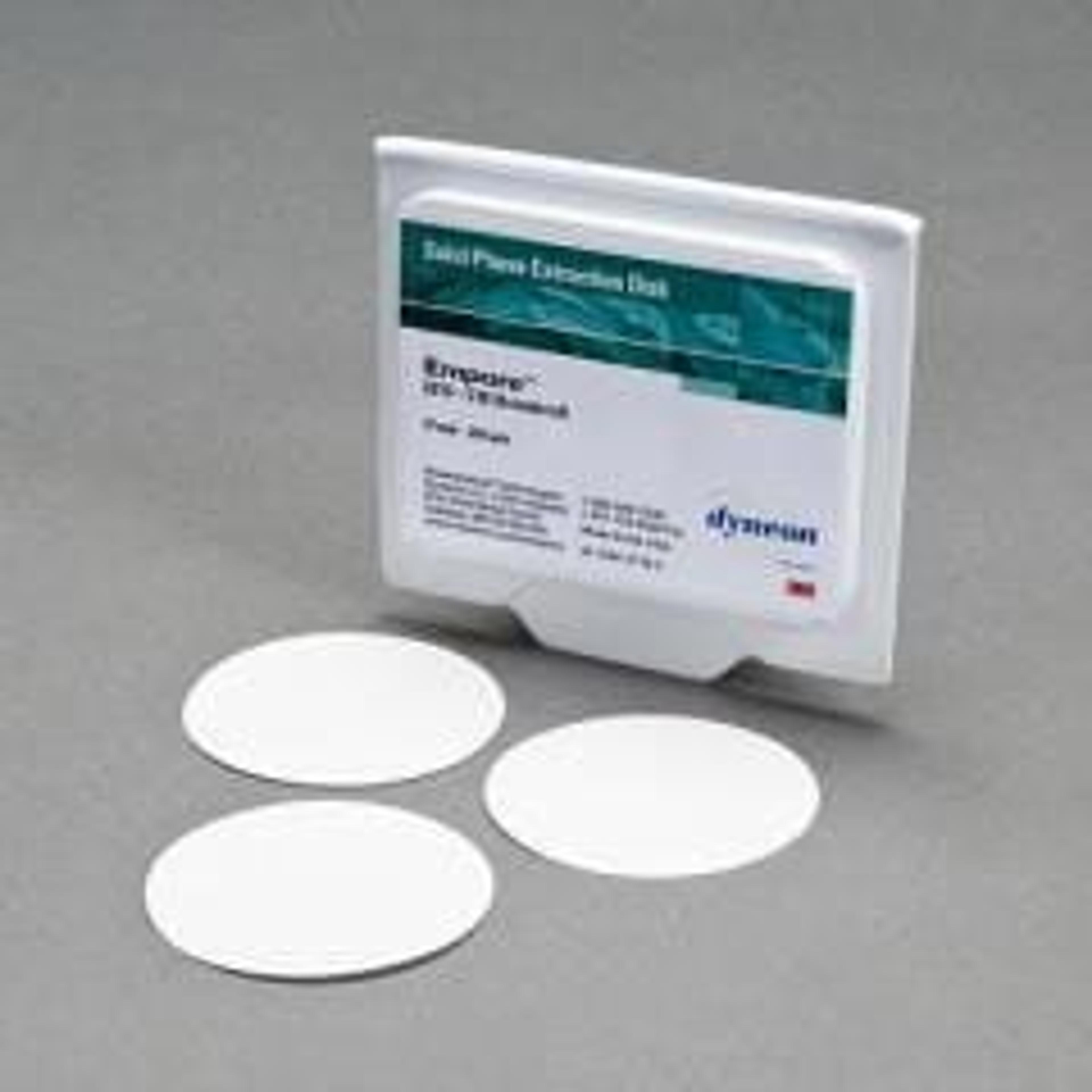3M Empore Extraction Disks used in Environmental Analysis
10 Dec 2008Solvents with Little Solubility for Water May Yield Low Recoveries. The correct choice of elution solvent is essential for consistently good recoveries in environmental analysis. Labs have encountered low (40-70%) and/or inconsistent recoveries when using methylene chloride (dichloromethane) to elute solid phase extraction disks as recommended in EPA Method 525.1 and other methods. These low recoveries arise from the inability of methylene chloride to displace and penetrate the water saturating the porous sorbent particles to which the analyte molecules are adsorbed. Similar behavior occurs with hexane, another solvent in which water has a very low solubility.
Improving Recoveries
Recoveries can be increased when the elution step is modified to incorporate a more water soluble solvent. Modification resulted in 85-95% recoveries for Method 525.1.
Modified Elution Scheme
1. Rinse the sample bottle with 5 ml ethyl acetate, add to the disk, and pull it through with vacuum.
2. Rinse the sample bottle with 5 ml methylene chloride, add to the disk, and pull it through with vacuum.
3. Rinse the glass reservoir with 5 ml 1:1 methylene chloride:ethyl acetate and pull it thorough the disk with vacuum.
4. Pass the combined eluate through a sodium sulfate drying column and into a collection vial for evaporation. Gently evaporate the eluate and check the concentration efficiency using spikes. (Aldrin and/or phenol are very sensitive indicators of concentration losses.)
Other Factors Affecting Recoveries
The solubility of water in the eluting solvent is only one factor to be considered. Also important are conditioning, sample bottle rinsing and method of concentration.





